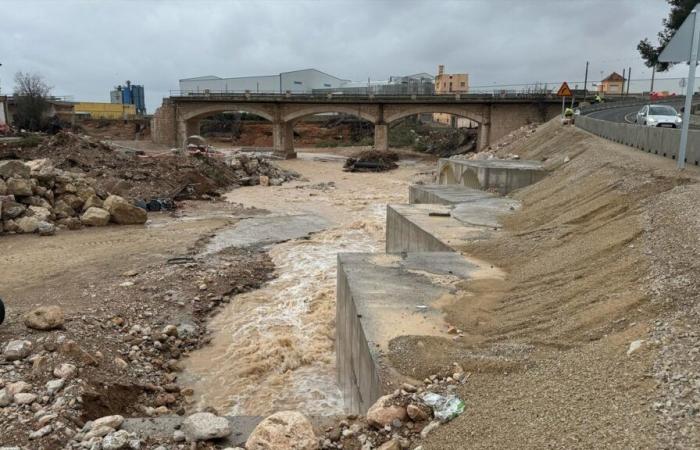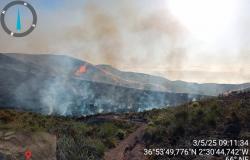
A report made by specialists from the University of Valencia, Avamet and Aemet points to the role that The Barrancos de Horteta and Gallegoboth “Minor Brothers” from Poyothey had the day of the tragic Dana that swept a large part of the province of Valencia and ended the life of 228 people. In fact, he raises two main hypotheses, but argues that “what surely did not happen is that the main responsibility outside the headwaters of Poyo”.
The article, which will be published in ‘Geographic Research’ of the University of Alicante, and of which it has transcended an advance, points out that, from the first moment, in the reconstruction that is being carried out in the flood of October 29, 2024, attention is focused on this rambla. However, the Poyo, warm these experts in their text, which has been consulted by Europa Press, has “two younger brothers, the ravines of Horteta and Galician “, and indicate that the first of them It converges with the Poyo in Torrentjust before the apical point of the great alluvial fan in which the flood occurred. In this sense, they point out that the flood was “so great that this time it overflowed from this point, flooding the entire plainboth north and south of the ravine. “
At this point, they emphasize that he has come to talk about Picos of more than 2,500 m3 /sec at some moment and has been implied, with it, The main and almost exclusive head was the poyo. “However, both the Galician ravine, and Horteta contribute their waters to Poyo after the capacity, and their flow could not be measured,” the experts defend, after which they consider: “Who first hit? Riada? “
Faced with these questions, they assert that the only way to try to approach what happened is rebuild the flood with a hydraulic modelfed with rainfall that have the maximum possible temporary disaggregation. These, in addition, must be rigorously contrasted, since there were many “registration failures” during the day in automatic stations, according to the specialists, who specify that the simple TEMPORITY AND DISTRIBUTION ANALYSIS Space of rainfall volume allows “quite reliable hypothesis.”
The time analysis leaves some “clear ideas”
In the study they are carrying out on the time evolution of rainfall on October 29, some “clear ideas” appear, such as Precipitation contributions from 4:00 p.m. to 7:00 p.m. In the backwater basin of the capacity during the second flood of the poyo, the catastrophic of the afternoon, They are older than those fallen in the agorad basin part.
Likewise, they emphasize that precipitation began to fall with very strong volumes in the Horteta and Gallego basins At least an hour before to do it in the headers of poyo. Only the lower part of the agorad basin, which extends after the confluence of the large and chiva ravines in Cheste, had a behavior similar to that of the unporated part, but their contributions do not reach a third of the total, they bet.
Another issue is that the pluviometric contributions schedules of the aphorated part have two temporary peaks, at 6:00 p.m. Great and Chiva were already clearly older than those of the rest of the basin.
Conclusion: could “hit” first Horteta
In conclusion, they show that what could have happened is that who “hit” first out Horteta “with the help of Gallegothe smallest brother, and then the water from the lower part of the Poyo basin, the older brother and who is taking the bad reputation of responsibility.
In any case, summary, there are only two solutions: either the Horteta, Galician and lower part of Poyo (the one that broke the capacity with 2,000 m3 /sec), and then the flood could triple or more this amount, or first hit Horteta and then did Gallego and Poyo, with a certain lamination of the peak of flood. ” headers of Poyo, whose great contributions were later and further from the apical point of the alluvial fan, “they say.
The authors of this analysis are Alejandro J. Pérez Cueva (UV), Rafael Armengot Serrano (AVAMET), Ghalleb Fansa Saleh (UV), José Ángel Núñez Mora (Aemet) and Adrià Revert Ferrero (Avamet).





